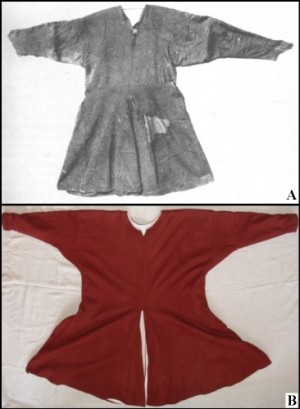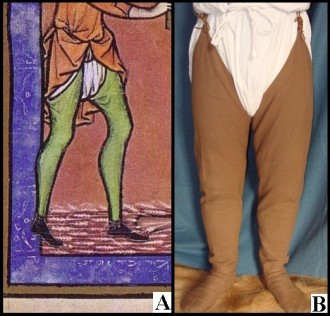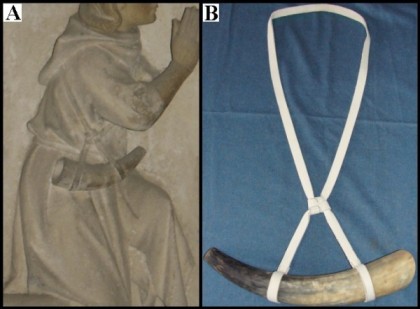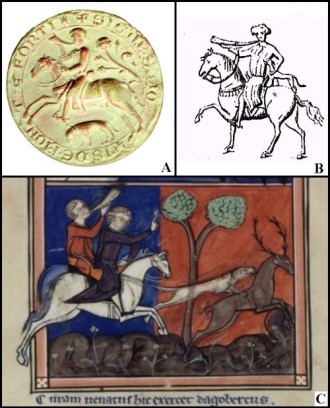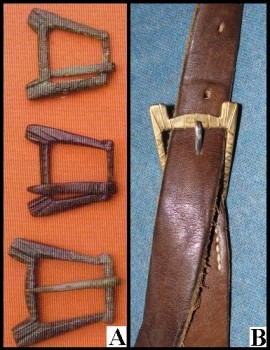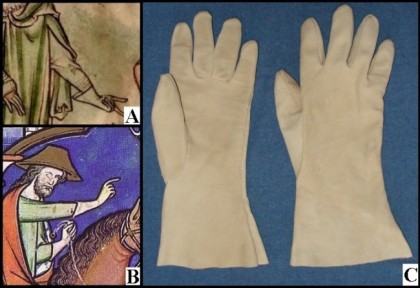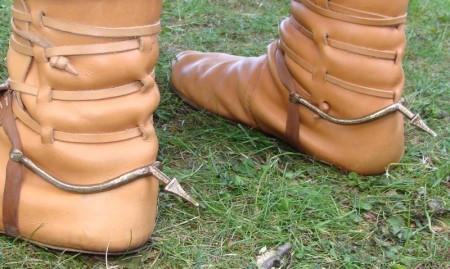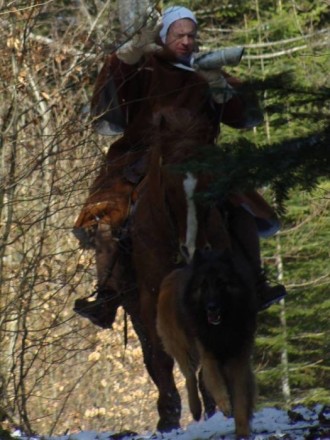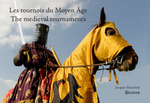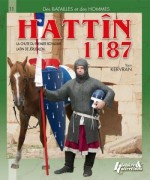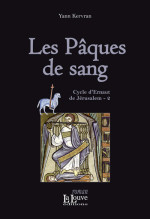- A 13th century knight's hunting outfit -
By Bernard - translated by Ivan
Written on 29 March 2011
Translated on 21th february 2014 by Ivan
Like most noblemen at the time, Bernhardt de Teyssonnière (see “Bernhardt de Teyssonnière, French knight of the seventh Crusade”) often goes hunting. This activity is a both a pastime and good training for combat (riding on difficult terrain).
The dress worn for this activity was practical and comfortable. It includes a short tunic, a pair of hose, and a coat. In addition, Bernhardt wears a pair of spurs (as required by any horseman), a pair of gloves and a belt, and carries a horn (useful for communicating with other members of the hunting party and for pursuing the quarry).
The tunic
The hunting tunic is shorter than the one usually worn by noblemen at the time [1]. This was possibly due to the difficulty that a long garments would have caused when walking through the undergrowth.
It is made of wool and its deep colour shows that our knight can afford good quality dyed cloth, but it is not emboidered or decorated in any way, since its function is not ostentatious or ceremonial.
The pattern is based on the so-called “Kragelun tunic” [2]. Even though this garment is dates from an earlier period (between 1040 and 1155) and has a different geographic provenance, its pattern is similar to the ones seen on different pictorial sources from Bernhardt's period, including fitted cuffs and a baggy cut for the rest of the garment. Unlike the original item, Bernhardt's tunic has a front and rear vent, which makes it more practical for horse-riding.
The hose
The pair of hose are made of brown wool, typical of the period. Like the tunic, they are simple, practical but good-quality garments.
The coat
Based on a sculpture found in the Abbey of Saint Denis, with a pattern similar to the ones seen in the Maciejowski Bible, Bernhardt's coat protects him well from the cold and has a practical, comfortable cut for horse-riding (even though it is slightly too long for walking through the undergrowth). The good quality of the wool and the dye, just like the tunic, would have been afforded by a knight.
The hunting horn
Hunters are shown with hunting horns on many seals, miniatures and sculpturesn les sceaux, les enluminures et les sculptures. Bernhardt de Teyssonnière carries such a horn. It is made of animal horn and is fitted with a leather sling. This allows him to carry it and have it to hand when riding.
The belt
The belt is a simple leather strap with a brass buckle similar to the ones found in the Sens region in France.
The gloves
The gloves are made of fine leather. Their function is practical, since they protect the hands from the cold and from friction when holding the reins, but they may also have had a symbolic function. Several subjects shown wearing gloves in pictorial sources seem to be of a higher social status. In any case, both functions would be compatible with Bernhardt's status.
The spurs
Knights wore spurs on horseback in war and during the hunt, as can be seen on many sources, such as the seal attributed to Simon IV (between 1164 and 1175 – 1218) or Simon V (1208 – 1265) de Montfort and on the seal of Geoffroy de Lusignan, c. 1225 (see the article on “Bernhardt de Teyssonnière, French knight of the seventh crusade").
Riding in the undergrowth
On the seal of Geoffroy de Lusignan (see figure 5A), the horseman rides with reins looped around the hand holding the horn [3] and with the other hand holding the dog astride the horse's croup (the dog, even running, would not be able to keep up with the horse). Even without a dog, this position allows the rider to keep one hand free to protect himself from low-hanging branches while sounding his horn. In open terrain, the rider can adopt the usual riding position.
Bibliography
- 1 - « Il avait bien l'air d'un homme qui revient du bois. Il portait un vêtement de chasse, court comme il convenait... » Lancelot of the Lake c. 1225, translated by François Mosès, Lettres gothiques collection, “Le livre de poche” edition, p. 393.
- 2 – Tunic found in a bog in Denmark. See Marc Carlson's website for further information.
- 3 – This position was used when using a bow on horseback. See e.g. the Apocalypse with glossary, folio 07 verso, British, 13th century, BNF Richelieu, Ms 403.
- 4 - “Vous et votre Tervueren” by Pierre Van der Heyden, Éditions de l'Homme, 'Nos animaux' collection.
We would like to thank Gaëlle and Thomas for hosting us and allowing us to ride Matthéo and to use Charly (the dog) for these photos.


